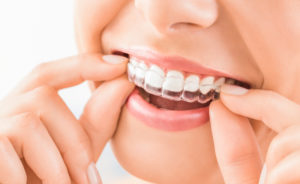Interesting Facts About Teeth and Dentistry

Our teeth are one of the most important parts of our bodies, and they are each unique to us. Our teeth are like a fingerprint: they are individual to us and never the same as anyone else’s. Teeth perform specific functions that are essential for speaking and eating. Our teeth have enamel, which is the hardest substance in the body and it protects our teeth from decay. The more that we learn about our teeth, the more important it is for us to take care of them. Find out what all our teeth do and how they help us with this guide!
Facts About Dentistry
For hundreds, and even thousands, of years, dentistry has been an important aspect of human’s lives. Even though dental technology and knowledge might not have been as well known a few thousand years ago, our ancestors still understood the importance of taking care of their teeth. People have been caring for their teeth for centuries, and historians have found evidence of dental care dating back to 5000 B.C. in ancient Egypt. The Egyptians would use crushed eggshells and ground animal hooves to clean and polish their teeth, before toothbrushes were invented. The first toothbrushes that were used anciently were actually twigs, or tree bark, that our ancestors would chew on, hoping that the frayed ends would clean their teeth. It wouldn’t be until the 1700s when a British inventor created an adapted version of a toothbrush that he had seen in China, one with a bone handle with boar bristles inserted into small holes that lined the brush and then secured with wire. Even up to the 1930s, toothbrushes were still rudimentary, until brushes with nylon bristles and ergonomic handles were developed, which is what we still use today.
Facts About Teeth
Although oral hygiene was important to our ancestors, little was known about the function and specifics of teeth that modern technology has allowed us to learn about in our day and age. Teeth are the hardest substances in our bodies, and enamel helps keep them strong and durable. We use teeth to eat, speak and chew, so they’re an important part of how we live. Even though they are hard, white and contain calcium, teeth are not bones! They cannot heal themselves or grow back if they sustain damage, so it’s very important that we are careful with what we eat and the activities that we engage in to avoid any unnecessary trauma. Additionally, teeth contain stem cells. Some researchers are even trying to use dental stem cells to regrow human teeth, which, if they can do it, would mean that we could replace lost adult teeth for the first time in history. Not only do teeth have stem cells, but they are also unique to each one of us and tell a story. Each tooth in our mouths is unique and different from the rest, and never is identical to someone else’s. Our teeth reveal how old we are, what we eat and even areas of the world that we have lived in! They are a lasting record of our life’s history.
Our mouths, and the teeth that are found therein, perform amazing functions that facilitate our ability to eat and digest food properly. Although they may be amazing, our mouths have some unusual quirks that most people don’t know about. The following are some of the weird facts about our mouth and teeth that one should think about:
- Teeth form in the womb, months before a child is even born. The crowns of babies’ first 20 teeth are already under the gumline when they are born, waiting to erupt.
- The average human produces 25,000 quarts of saliva in their lifetime, enough to fill two swimming pools.
- Plaque found on teeth contains more than 300 kinds of bacteria.
- Humans spend 38.5 days of their life brushing their teeth.
Good Dental Habits To Have
Now more than any generation before us, we have a limitless amount of options to choose from to protect our oral health and develop strong, healthy teeth. Our teeth do so much for us, so it’s important that we do everything we can to protect them. First and foremost, brushing and flossing should become part of our daily routine. Especially if your or your child has braces or an orthodontic device, maintaining a strict brushing and flossing regimen will prevent tooth decay and cavities. Brushing removes debris on the surface of the tooth while flossing removes food particles that can get stuck between teeth or near the gumline, where plaque can easily build up. Furthermore, regular checkups for both you and your child with your dentist and/or orthodontist will allow them to monitor teeth movement and keep your teeth as shiny and beautiful as possible.
For more information on what you can do to protect your teeth with or without braces, call Belmar Orthodontics at (303) 225-9016! Our dedicated team is committed to helping you and your family receive the care that you need and get the smiles that you deserve!
Orthodontic Treatment as Restorative Dentistry

Did you know that getting your teeth straightened can be a form of restorative dentistry? This is because restorative dentistry seeks to restore or bring your smile to a more perfect state. Crooked teeth can become straight, which in turn starts to relieve the burdens of tooth decay, gum disease, bad breath and other oral health problems. If you want to restore your smile once more, see what our 4 different orthodontic options can do for you!
Why Is Your Smile Important?
Some patients don’t realize just how important a smile really is. Studies show that your smile is one of the first things another person will notice about you. Is that smile showing that you are healthy and confident? Or do you hide your smile because of crooked teeth, discoloration or other aspects you don’t like? When a smile looks good, studies show that people often feel more confident and they exude that confidence much easier. A better smile can lead a person to be more social and confident to pursue successful endeavors.
It’s not only what a smile does for a person themself that’s important. How your smile looks to others also will determine a lot about how successful you are. The makes of the orthodontic appliance Invisalign conducted a study about smiles, and what they found was quite amazing:
- 1/3rd of people notice a person’s smile before any other feature.
- Those who have a straighter, more beautiful smile are 45% more likely to get a job over a competitor with a crooked or discolored smile.
- Your smile can send messages about how healthy you are and how happy you seem. When that smile is straighter and more beautiful, others will see you as 21% more likely to be healthier and 47% happier.
- 73% of people are more likely to trust you at first glance if you have a better smile.
- You’re 58% more likely to be perceived as wealthy and 57% more likely to get a date if you have a great smile.

What Is Restorative Dentistry?
Your teeth will determine most of how good your oral health. When you eat, sugars in the food you eat mix with mouth bacteria. That creates plaque, or that sticky, acidic substance that coats your teeth. Over time, if proper oral hygiene habits aren’t observed, the teeth will change colors and decay. This happens much easier to the teeth if they are crooked. That’s because it’s harder to clean between the teeth if there is no way to get floss through crooked teeth.
Restorative dentistry seeks to restore smiles that are crooked or damaged through decay or gum disease (a disease to the gums that happens just like tooth decay). This form of dentistry consists of dental services such as teeth whitening, same-day crowns, root canal therapy and tooth-colored fillings. There are many dental patients that will get dental veneers—also known as “porcelain veneers”—to restore their smile. This is a dental service where the top layer of your teeth is taken off and replaced with a perfect, white tooth shell. However, once that part of your natural tooth is taken off, you can’t get that natural part back. Porcelain veneers do make your smile look beautiful, but they don’t change your crooked teeth or oral health issues underneath.
Fixing the Problem with Orthodontic Treatment
Fixing the problem permanently is a great solution to getting a beautiful smile and reducing your problems with tooth decay, gum disease, bad breath and more. Straighter smiles are ones that are easier to clean and ones that look attractive and healthy. Plus, once you straighten your smile with orthodontic treatment, it can stay that way for life. Orthodontics is different than dentistry, but is absolutely important to your oral health.
Dentists will fix problems with tooth decay and gum disease. Orthodontic treatment and restorative dentistry through those braces can help prevent problems in the first place. Plus, orthodontic braces are able to correct bite and alignment issues that are caused by misaligned bites and jaws. Those issues can cause speech and development problems without intervention. Without orthodontic treatment, other restorative dentistry methods can only do so much.

Restorative Dentistry for You
Our easiest method of restorative dentistry for teens and adults is through Invisalign treatment. This option works just as well as our lingual braces, ceramic braces and traditional metal braces. However, with Invisalign, the focus is on aesthetics as well as straightening. We want you to have a beautiful smile as you straighten, and Invisalign is a great way to achieve that.
Invisalign is a orthodontic treatment that is designed to be virtually unnoticeable on your teeth. Patients have their teeth digitally scanned in-office and a treatment plan is made for them, mapping out how orthodontic treatment will transform their smile in 18 months or less. Often, patients can straighten their smile in 1/3rd of that time, depending on the condition of the teeth, bite and alignment. Less office visits are typically needed for this type of restorative dentistry.
You simply wear your aligners for 20-22 hours each day (and overnight), and by switching out the aligners each week, your teeth shift into a straight smile over time. The benefit of this restorative dentistry option is that you are actually fixing the root cause of oral health problems. Crooked teeth cause tooth decay and gum disease to worsen, but you avoid that with a straight smile. With other restorative dentistry options (such as teeth whitening or veneers), you will still have the crooked teeth (although masked), and possibly the dental problems. Avoid all that while still getting a beautiful smile with Invisalign. If you want to learn more about this restorative dentistry option for adults and teens, contact Belmar Orthodontics today at (303) 225-9016!
Dentistry and Orthodontics Are Closely Related

Dentistry and orthodontics are quite different, but they are also closely related. You need care from both a dentist and an orthodontist in order to keep your smile healthy. Dentistry and orthodontics both deal with the health of your smile. One focuses on straightening the smile and other focuses on tooth decay, gum disease and treatments to help correct oral issues. Both involve services that “fix” problems with the teeth to help make your mouth healthier, thus making you healthier. Find out the difference between dentistry and orthodontics, the similarities, and how both can help you have the best smile possible.
What Dentists Do
Dentists go to school to specialize in problems involving the teeth, nerves, gums and jaw. They can provide any or all of the following services:
- Comprehensive exams and dental cleanings
- Oral cancer screenings
- Sedation dentistry
- Laser cavity detection and cavity detection using x-ray imaging
- Tooth extractions
- Laser tissue treatment
- Oral hygiene training
- Dental sealants
- Periodontal treatments on the gums
- Scaling and root planing for gum disease
Dentists are also trained in cosmetic dentistry and can provide services such as dental implants, porcelain veneers, porcelain crowns, cosmetic bonding, dental bridges and even botox treatment. Restorative dentistry involves root canals and root canal therapy, teeth-whitening services, tooth-colored fillings, and in some cases orthodontic care through Invisalign. The dentist is usually trained in orthodontics to provide this service. If a dentist finds that a patient has a problem with their bite or alignment, they will refer the patient to an orthodontist who is certified and trained to correct the issue.
What Orthodontists Do
Orthodontists must obtain several degrees to become orthodontists. They need more training than dentists do because they must be able to correct smiles as well as identify oral health issues. Orthodontists are specially trained with correcting bites, occlusion (or alignment), and in straightening the teeth. In a healthy mouth, the upper jaw rests on top of the lower jaw. The upper front teeth will rest slightly forward on top of the lower front teeth. Not all mouths are aligned correctly. Some bites that orthodontists correct include:
- Overbite – In the upper jaw, the front teeth rest over the lower front teeth instead of above. You never want the front teeth to overlap the bottom teeth completely, as this creates pain and other problems when biting, eating, and other everyday tasks.
- Underbite – This is the opposite of overbite. The lower front teeth rest far in front of the upper front teeth. This creates similar jaw problems as mentioned with overbite. Underbite can lead to jaw and joint pain, earaches, headaches. and more.
- Crossbite – Crossbite involves teeth that cross in all different directions. Some of the teeth are slanted toward the tongue. Other teeth are slanted towards the cheeks. This creates uneven pressure all over the mouth when biting and chewing, which can lead to broken or fractured teeth, weakened enamel, pain, and more. Crossbite can even cause abnormal facial development and jaw problems if left untreated.
- Openbite – Openbite refers to an opening (or gap) in the teeth between the upper and lower jaws when the mouth is closed. This gap is right at the front of the teeth and might even appear as a hole in a patient’s smile. Openbite leads to speech impediments, lisps and other problems with speaking if left untreated.
Dentistry and Orthodontics Compared
Did you know that an orthodontist has dental training? Orthodontists must obtain several degrees in order to work. They must obtain a Doctor of Dental Surgery (DDS) degree or a Doctor of Medical Dentistry (DMD) degree just as dentists do. Then, they must apply to an orthodontic graduate program to obtain a Masters of Science degree. Orthodontists go through all the same training as dentists and then some. This is how orthodontists can spot dental issues forming. Basically, all orthodontists are dentists but not all dentists are orthodontists.
If you have problems with your teeth, gums, oral nerves or jaw, then go see your dentist. Your dentist will refer you to an orthodontist if the issue is corrected by an orthodontist or has to do with bite, alignment or straightening. When it comes to problems such as tooth decay (cavities), both dentists and orthodontists can help you in some way. Orthodontic care via braces can help straighten the teeth, thus making them easier to clean and reducing your risk for tooth decay. Dentists can also help you prevent tooth decay with comprehensive exams, biannual cleanings and treatments that stop the progression of cavities if they have formed.
Benefit From Both
Both dentistry and orthodontics involve services that “fix” problems with the teeth to help make your mouth healthier, thus making you healthier. Both professions involve doctors who are highly trained to help problems with your oral health. Patients can benefit greatly from having both a dentist and an orthodontist. Take a step towards a healthier mouth, and schedule an appointment with Dr. Hardy today by calling Belmar Orthodontics at (303) 225-9016!

